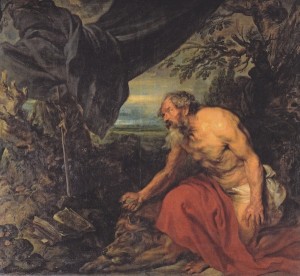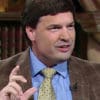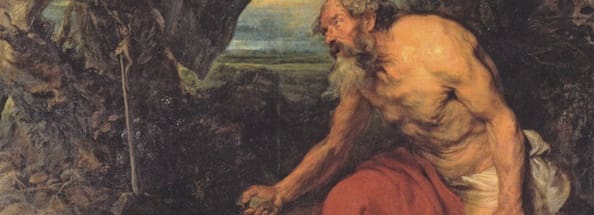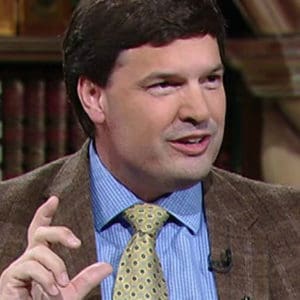“Forsake not the discipline.” These words are reported as among the very first and very last teachings of St. Antony of the  Desert by his spiritual son, St. Athanasius. The Christian life is not something we master – but it does give us everything we need to master ourselves in the new and unrepeatable circumstances each day, each moment, brings. Every day we must choose to begin to live the Christian life as if we were making a fresh new beginning, as if up to this present moment I had not yet begun to live out my baptismal promises. To forsake not the discipline right here and right now means to make a new beginning once again – in very important ways, our faith is all about this new beginning.
Desert by his spiritual son, St. Athanasius. The Christian life is not something we master – but it does give us everything we need to master ourselves in the new and unrepeatable circumstances each day, each moment, brings. Every day we must choose to begin to live the Christian life as if we were making a fresh new beginning, as if up to this present moment I had not yet begun to live out my baptismal promises. To forsake not the discipline right here and right now means to make a new beginning once again – in very important ways, our faith is all about this new beginning.
Lent has begun, our initial enthusiasm for penance is probably being tested. How do we make a new beginning in our Lenten observance today? How do we remain faithful to the discipline of the Christian life in the midst of the cares and concerns life will impose on my efforts already in this present moment?
In Ascent of Mount Carmel, Book I, Chapter 13, St. John of the Cross suggests an ancient method. He says we should resolve to imitate Christ in everything and that to do this, we must study the Lord’s life. Here, he makes a key observation. When we study Christ’s life, we see that in everything Christ did, the Lord only acted for the glory and honor of the Father. On this basis, the Carmelite Master invites us to renounce, out of our love for Christ, anything in our lives that is not purely for the glory of the Father as well.
Test St. John of the Cross’s insights for yourself and the illumination we need to hold firm to Christ begins to shine whatever our current circumstance. When in our home, our minds can rest with Him in that hidden mystery of Nazareth: for in this hiddenness is where His human heart learned to behold the Father’s glory. In our travels, our hearts can accompany His during those long excursions by foot across Galilee and Judaea: for He is always on the way to the Father, the One who awaits us in love. We can scrutinize our efforts to love against the ministry He carried out with signs of power and words of wisdom: for every heartbeat and breathe spent in this work of love was offered as a living sacrifice of praise. Our prayer can seek to penetrate the prayer He offered in solitude on hidden mountains and in secret gardens: for those mysterious conversations canopied in dark night flowed with all kinds of blessings, even very difficult blessings so terrifying He sweat blood.
When I search for the Lord in the Scriptures, if I make just a little effort ponder that wisdom, I always see new ways in which the Carmelite Master is right: Christ lived life to the full because He beheld in his frail humanity the glory of the Father in all things – and He yearned to make this glory known in everything. When He spoke and when He was silent, when He performed signs and when He did not, when He ate and when He fasted, when He slept and when He kept vigil – all of this He did with burning desire for the glory of the Father – because He loves the Father and loves what our heavenly Father loves. How could we who have been invited to taste this Eucharistic love live any differently?
Faithfulness to the sacred discipline of life the Lord has blessed us with helps us welcome a gift of love Christ yearns for us to have. If Christ lived life to the full for the glory of the Father, it is this same passion, this fire of love, that the Lord wants to communicate to us. Indeed, a single precious spark of Christ’s love for the Father in us challenges and goads and calls into question our whole way of life, even the shallow piety on which we prided ourselves. What happens when this humble spark becomes a bright flame and the flame a raging fire? The discipline of the Christian life is all about making room in our lives for this spark to burst into flames!
Note from Dan: Anthony’s fantastic book on prayer, Hidden Mountain Secret Garden, can be found HERE in print, and HERE in Kindle format.
+
Art: Der heilige Hieronymus (The Holy Jerome), Anthony van Dyck, 1515/16, PD-US author’s life plus 100 years or less, Wikimedia Commons.





